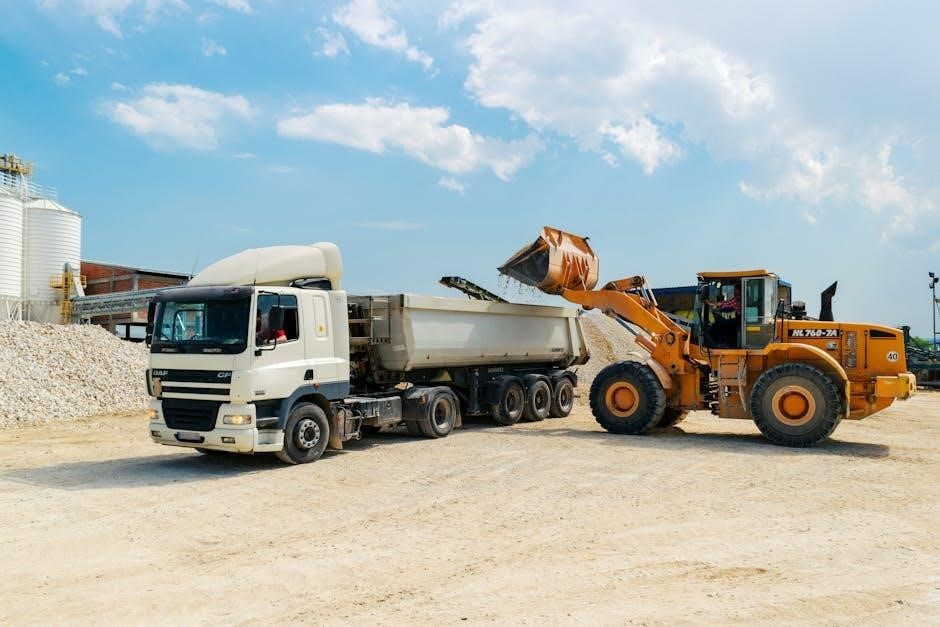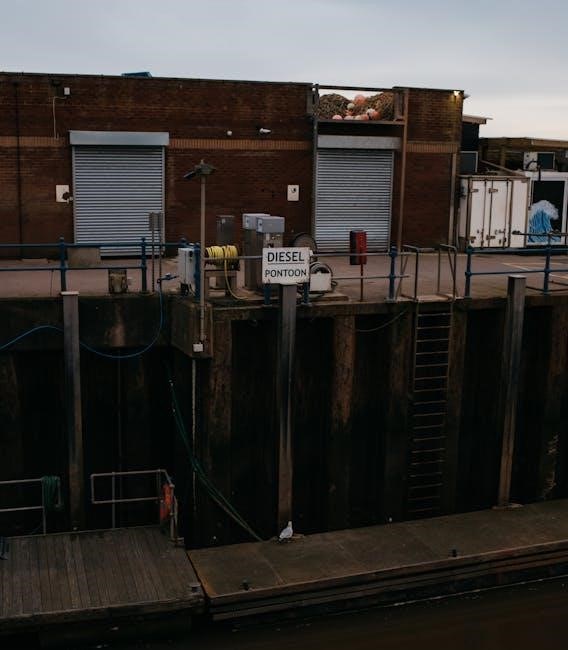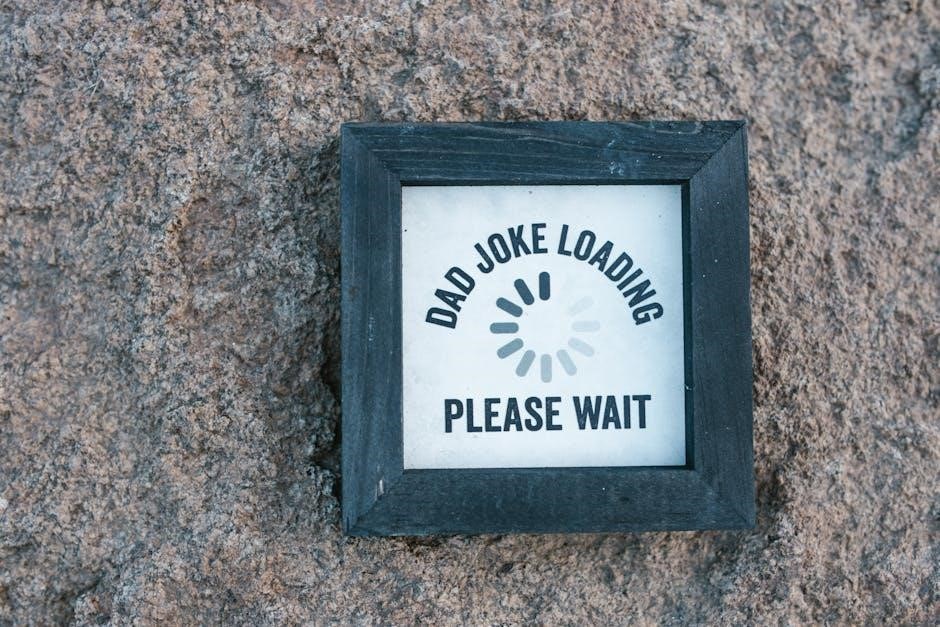Pontoon loading guides are essential tools designed to simplify and secure the process of loading pontoon boats onto trailers. They enhance safety, efficiency, and alignment during the procedure.
What Are Pontoon Loading Guides?
Pontoon loading guides are specialized systems or devices designed to assist in aligning and securing a pontoon boat onto a trailer during the loading process. These guides typically consist of adjustable rails, rollers, or markers that help direct the boat into the correct position. They are often customizable to fit various pontoon sizes and trailer configurations, ensuring a snug and stable fit. By providing visual and physical cues, loading guides reduce the risk of damage to both the boat and trailer. They also streamline the process, saving time and effort while enhancing safety and efficiency for boaters of all experience levels.
Why Are Pontoon Loading Guides Important?
Pontoon loading guides are crucial for ensuring safe, efficient, and damage-free loading of pontoon boats onto trailers. They minimize the risk of misalignment, which can cause costly damage to the boat, trailer, or surrounding structures. By providing clear guidance, these systems reduce the stress and frustration often associated with loading, especially for inexperienced boaters. Additionally, they enhance stability during transport, preventing shifts that could lead to accidents. Overall, pontoon loading guides are essential for protecting investments, ensuring safety, and making the loading process more manageable for everyone involved.

How Pontoon Loading Guides Have Evolved
Pontoon loading guides have evolved from basic alignment systems to sophisticated, adjustable designs that cater to various boat sizes and trailer setups. Early versions relied on fixed rails, while modern guides feature adjustable components to accommodate different tube diameters and boat configurations. Innovations like sliding rails and customizable guides have improved precision and ease of use. Additionally, advancements in materials and engineering have made these systems more durable and adaptable to different loading conditions. The development of specialized products, such as the Pontoon Loader, further demonstrates how technology has enhanced the efficiency and safety of the loading process over time.

Understanding Pontoon Trailer Components
A pontoon trailer includes a sturdy frame, axles, wheels, brakes, and lighting. Guide rails and bunks support the boat during transport, ensuring alignment and stability.
Key Parts of a Pontoon Trailer
A pontoon trailer consists of a durable frame, axles, wheels, and brakes, designed to support the weight and size of the pontoon boat; The trailer includes a coupler for attaching to a towing vehicle and suspension for smooth transport. Lighting systems, such as brake lights and markers, enhance visibility and safety. Guide rails and bunks are critical for aligning and supporting the pontoon during loading and travel. Winches and tie-down straps secure the boat in place, while fenders protect the trailer and boat from damage. Each component plays a vital role in ensuring safe and efficient transport.

Role of Guide Rails in Pontoon Loading
Guide rails on a pontoon trailer are essential for safely and efficiently loading the boat. They provide a clear alignment path, helping to center the pontoon during the loading process. These rails act as a visual and physical guide, reducing the risk of misalignment or damage to the boat or trailer. By keeping the pontoon properly positioned, guide rails ensure stability and prevent shifting during transport. They also simplify the loading process, especially for inexperienced operators, and help maintain control in various water conditions. Well-maintained guide rails are crucial for smooth, incident-free loading operations.
Adjusting Pontoon Trailer for Optimal Loading
Adjusting a pontoon trailer for optimal loading ensures a safe and efficient process. Start by ensuring the trailer size matches the pontoon’s dimensions, referring to the manufacturer’s specifications for proper fit. Next, adjust the trailer’s tilt to facilitate smooth loading, considering water conditions and the boat’s design. Position the trailer in the water at the correct depth, using markers or estimating based on water level for easy boat entry. Align and adjust guide rails to center the pontoon, enhancing stability and control. Check the suspension to support the boat’s weight properly and ensure lighting is adequate for visibility, especially in low-light conditions; Making these adjustments carefully ensures a secure and balanced load, preventing potential issues during transport.

Safety Considerations for Pontoon Loading
Safety considerations for pontoon loading involve wearing life jackets, ensuring proper ventilation, and using dock lines to secure the boat. Always follow manufacturer guidelines and local regulations.
General Safety Tips for Loading a Pontoon
Always wear a properly fitted life jacket and ensure the dock area is clear of obstacles. Use dock lines to secure the pontoon while loading. Never overload the trailer, as this can cause instability. Ensure the trailer brakes are functional and the parking brake is engaged. Keep bystanders at a safe distance and avoid distractions. Use a spotter if possible to guide the boat onto the trailer. Be aware of water depth and avoid sudden movements. Regularly inspect the trailer and boat for damage or wear. Follow all local boating regulations and manufacturer guidelines for safe loading practices.
Specific Safety Precautions for Pontoon Trailers
Ensure the trailer is rated for the pontoon’s weight and size. Always use safety chains and secure the trailer to the vehicle. Check the trailer’s axle, brakes, and tires before loading. Maintain proper tongue weight to prevent trailer sway. Use a trailer with a reinforced frame for heavy pontoons. Keep the trailer level when hitched to the vehicle. Avoid sudden acceleration or braking while towing. Regularly inspect the trailer’s wiring and lights for functionality. Ensure the trailer rollers or bunks are properly aligned with the pontoon’s hull. Never exceed the trailer’s capacity or tow rating.
Emergency Preparedness During Loading

Always have an emergency kit nearby, including a fire extinguisher, first aid supplies, and a communication device. Ensure everyone involved knows the location of these items. Designate a person to oversee the loading process and handle emergencies. Keep a phone accessible for quick calls to emergency services if needed. Regularly conduct safety drills to prepare for potential incidents. Secure loose items on the pontoon and trailer to prevent accidental damage or injury. Be prepared for sudden weather changes that could disrupt loading. Always maintain a clear path for emergency exits and ensure the area is well-lit. Stay vigilant and ready to act swiftly if issues arise.

Preparing for Pontoon Loading
Ensure the trailer and pontoon are ready, gather tools, and understand the loading environment. Proper preparation is key for a smooth and safe loading experience.
Checking the Trailer and Boat Before Loading
Before loading, inspect the trailer and boat thoroughly. Check the trailer’s tires, brakes, and guide rails for damage or wear. Ensure the boat’s hull is free of damage and the drain plug is secure. Verify that all systems, including lights and brakes, are functioning properly. This step ensures safety and prevents potential issues during loading. Addressing any problems beforehand avoids delays and hazards, ensuring a smooth and secure loading process.
Positioning the Trailer for Easy Loading
Properly positioning the trailer is crucial for efficient pontoon loading. Ensure the trailer is on level ground to maintain stability and alignment. Align the trailer’s centerline with the boat’s center to facilitate balanced loading. Adjust the trailer’s depth in the water so the bunks or rollers are submerged appropriately, allowing the boat to float evenly. Ensure the guide rails are centered and angled correctly to guide the boat smoothly. Check the surrounding area for obstacles and ensure the trailer is securely attached to the towing vehicle. Proper positioning minimizes effort and reduces the risk of damage or accidents during loading.
Using Guide Rails Effectively
Guide rails play a vital role in aligning and stabilizing the pontoon during loading. To use them effectively, ensure they are securely attached and adjusted to match the boat’s width. As the boat approaches the trailer, guide the pontoons along the rails gently to maintain proper alignment. Use the rails to prevent the boat from veering off course and to reduce wobbling. Regularly inspect and clean the rails to ensure smooth operation. Proper use of guide rails minimizes the risk of damage to both the boat and trailer, making the loading process safer and more efficient.
Step-by-Step Pontoon Loading Techniques
Step-by-step pontoon loading involves aligning the boat with the trailer, guiding it onto the bunks, and securing it tightly. Ensure each step is done carefully for safety and efficiency.
Aligning the Pontoon with the Trailer
Aligning the pontoon with the trailer is the first critical step in the loading process. Ensure the boat’s centerline matches the trailer’s centerline to maintain balance. Use guide rails or markers to help position the pontoon evenly. Slowly back the trailer into the water, keeping the boat straight. As the pontoon floats onto the trailer, check its alignment visually and adjust as needed. Proper alignment prevents uneven loading and reduces the risk of damage or accidents. Always use a spotter for accuracy and safety during this step.
Guiding the Pontoon Onto the Trailer
Guiding the pontoon onto the trailer requires precision and patience. Once aligned, slowly drive or winch the boat onto the trailer while a spotter monitors the process. Use the guide rails to keep the pontoon centered and straight; In shallow water, pole or push the boat gently toward the trailer. In deeper water, use a winch or rope to guide it. Ensure the boat’s movement is smooth to avoid damage. Stop periodically to check positioning and adjust as needed; Proper guidance ensures the pontoon is centered and secure before final fastening.
Securing the Pontoon After Loading
After guiding the pontoon onto the trailer, securing it properly is critical for safe transport. Begin by tightening the winch strap firmly around the boat’s bow cleat. Use tie-down straps to fasten the pontoon’s sides to the trailer, ensuring even pressure. Attach the rear tie-downs to the transom, avoiding sharp angles to prevent damage. Double-check all straps for tightness and ensure the boat is centered. Finally, verify that the trailer’s coupler is securely attached to the towing vehicle. Proper securing prevents shifting during transit and protects both the pontoon and trailer from damage.

Post-Loading Checks and Securement
After loading, ensure all straps are tight, the pontoon is centered, and the trailer is properly hitched. Verify stability and recheck all securement points for safety.
Ensuring the Pontoon is Properly Secured
After loading, double-check all straps and winches to ensure the pontoon is tightly secured. Make sure the boat is evenly balanced and centered on the trailer. Tighten all fasteners and connections to prevent shifting during transport. Ensure the bow and stern are properly tied down, and the trailer’s hitch is securely attached to the towing vehicle. Verify that all safety chains and straps are in good condition and correctly positioned. Perform a final walk-around to inspect for any loose components or potential hazards. This step is crucial for safe and damage-free transportation.
Final Checks Before Transporting the Pontoon
Before hitting the road, conduct a thorough inspection of the pontoon and trailer setup. Ensure all lights and brakes are functioning properly and that the trailer is correctly hitched to the towing vehicle. Check the tire pressure of both the trailer and the towing vehicle, and verify that all tie-downs and straps are secure. Make sure the pontoon is properly centered on the trailer and that all loose items are stowed away. Additionally, confirm that the trailer’s brakes and suspension are in good working order. This final review helps ensure a safe and stress-free journey.
Regular Maintenance of Loading Guides
Regular maintenance of pontoon loading guides is essential for ensuring optimal performance and longevity. Start by cleaning debris and dirt from the guide rails to prevent obstruction. Inspect for any signs of wear, damage, or rust, and address these issues promptly. Lubricate moving parts, such as hinges or rollers, to maintain smooth operation. Check the alignment of the guides and adjust as needed to ensure proper boat positioning. Tighten any loose hardware and apply protective coatings to prevent corrosion. Consistent upkeep prevents malfunctions and ensures safe, efficient loading and unloading of the pontoon.
Troubleshooting Common Loading Issues
Identify alignment problems by checking the guide rails and ensuring the pontoon is centered. Address stuck situations by using a winch or adjusting the trailer angle. Inspect for damage or wear on the loading guides and replace parts as needed. Ensure the trailer is level and properly positioned in the water. Lubricate moving parts to improve smooth operation. Consult the manufacturer’s guidelines for specific troubleshooting steps. Regular maintenance can prevent many common issues, ensuring safe and efficient loading every time.
Identifying and Solving Alignment Problems
Alignment issues during pontoon loading can cause frustration and safety risks. Common problems include the pontoon veering off-center or the trailer not aligning with the boat. To identify these, visually inspect the guide rails and ensure the trailer is straight. Check for obstacles or debris that may misdirect the pontoon. Solve alignment problems by adjusting the trailer’s position in the water or using a winch to guide the boat. Ensure the pontoon’s centerline matches the trailer’s midline. Regular maintenance of guide rails and rollers can prevent such issues. Proper alignment ensures smooth, incident-free loading. Always practice patience and careful observation during the process.
Dealing with Difficult Loading Conditions
Difficult loading conditions, such as strong winds, currents, or uneven ramps, can complicate the pontoon loading process. To manage these challenges, ensure the trailer is properly aligned and use guide rails to stabilize the pontoon. If wind or water currents are strong, load the pontoon during calmer periods or seek assistance from another person. For low water levels or soft ground, place wooden planks under the trailer tires for better traction. Always maintain control of the boat’s movement using a winch or ropes. Regularly inspect the environment and adjust your technique to overcome obstacles safely and efficiently.

Repairing Damaged Guide Rails
Damaged guide rails can hinder the loading process, so prompt repairs are essential. Inspect the rails for dents, rust, or misalignment. Clean debris and apply lubricant to moving parts. For minor bends, carefully straighten the rail using a wrench or mallet. Replace severely damaged sections with OEM parts. Tighten all bolts and ensure proper alignment. Regularly maintain guide rails by applying rust-inhibiting coatings and checking for wear. Addressing repairs early prevents further damage and ensures smooth pontoon loading. Always follow manufacturer guidelines for replacement and maintenance to guarantee long-term functionality and safety.
Best Practices for Pontoon Loading
Always ensure proper alignment, use guide rails effectively, secure the boat thoroughly, and check all systems before transport to ensure safe and efficient loading.
Practicing Loading Techniques
Regular practice is essential for mastering pontoon loading. Start by loading your pontoon in calm, shallow water to build confidence. Focus on aligning the boat with the trailer guides and use a steady, slow approach; Practice in different conditions, such as windy or choppy water, to improve adaptability. Always maintain control of the boat’s movement and communicate clearly with helpers. Repetition will help refine your technique and reduce the risk of accidents. Over time, loading will become second nature, ensuring safer and more efficient processes.
Using Additional Accessories for Stability

Enhancing stability during pontoon loading can be achieved with additional accessories. Guide rail extensions or adjustable support stands can provide extra alignment assistance, reducing wobble. Stabilizing straps or tie-downs help secure the boat during the loading process, minimizing lateral movement. Anti-slip mats on the trailer ramps can improve traction, preventing the pontoon from sliding off. These accessories work in tandem with the loading guides to ensure a smoother, safer experience. Investing in such tools is a wise decision for novice and experienced boaters alike, as they enhance control and confidence during loading operations.
Following Manufacturer Guidelines
Adhering to manufacturer guidelines is crucial for safe and efficient pontoon loading. These guidelines are tailored to the specific design of your pontoon and trailer, ensuring compatibility and optimal performance. They often include detailed instructions for aligning the boat with the trailer, securing it properly, and maintaining the equipment. By following these recommendations, you can minimize risks, prevent damage, and extend the lifespan of both the pontoon and the trailer. Additionally, manufacturer guidelines may cover troubleshooting common issues and provide tips for improving loading techniques. Always refer to your owner’s manual for precise directions, as deviations may lead to unsafe conditions or equipment malfunctions. This ensures a smooth and secure loading process every time.
Mastering pontoon loading ensures safety, efficiency, and longevity of your boat and trailer. Always follow guidelines, maintain equipment, and practice techniques for a seamless experience on the water.
Proper alignment and slow, controlled movements are crucial for safe loading. Always use guide rails and ensure securement systems are tight. Regular maintenance of equipment prevents issues. Practice loading techniques to build confidence and efficiency. Use additional accessories like winches or rollers for stability. Double-check all connections and balances before transport. Stay alert to environmental conditions and adjust strategies as needed. Follow manufacturer guidelines to maximize safety and longevity of both the pontoon and trailer. Continuous learning and attention to detail ensure successful outcomes every time.
Importance of Continuous Learning
Continuous learning is essential for mastering pontoon loading techniques. As technology advances and new methods emerge, staying informed ensures safer and more efficient practices. Regularly reviewing guides and attending workshops can enhance skills and adaptability. Learning from others’ experiences and sharing knowledge fosters a safer boating community; Updated guidelines and equipment innovations should be studied to stay current. By committing to lifelong learning, operators can overcome challenges, improve efficiency, and maintain confidence in their abilities. This mindset promotes adaptability and preparedness for evolving scenarios, ensuring safer and more successful pontoon loading experiences over time.
Final Thoughts on Safe and Efficient Pontoon Loading
Safe and efficient pontoon loading is achievable with proper preparation, attention to detail, and adherence to best practices. Always prioritize safety by using high-quality loading guides and ensuring the trailer is well-maintained. Practice loading techniques to build confidence and proficiency. Regularly inspect equipment and address any issues promptly. By following guidelines and staying informed, you can minimize risks and enjoy a smooth boating experience. Remember, patience and careful planning are key to successful pontoon loading. Stay vigilant, and always be prepared for varying conditions to ensure safety on and off the water.